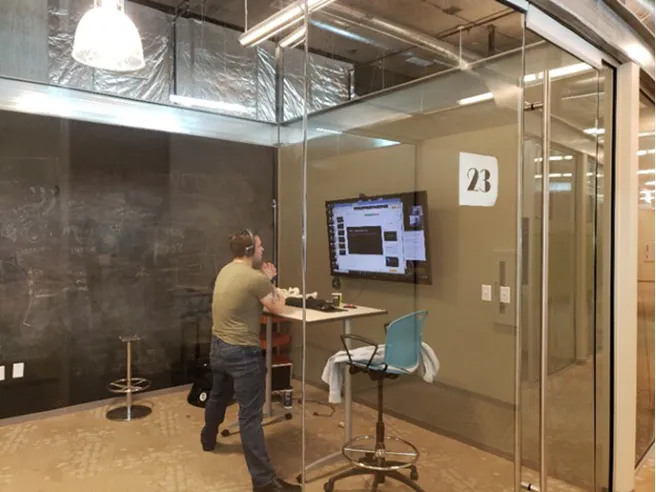
I wish I could tell you that all the ideas in this book are my inventions and that I am some kind of teaching and learning genius. The truth is, I am a collector of ideas. I rarely invent anything, and when I do, it is rarely worth writing about.
The secret of my success is to model things that are known to reliably work rather than try to reinvent the wheel. Reinventing the wheel requires you to be a genius and even then, it carries with it a high probability of failure. I am no genius, and I hate failing, and so I closely copy the things that made others successful . . . at least until I have got a good handle on the basics. This tilts the odds in my favor and gives me a high probability of success. Steve Jobs and Pablo Picasso used to say, “Good artist copy; great artists steal.” Regardless of whether you consider me a great artist or a thief, I want you to benefit from a trove of proven teaching and learning strategies.
This book contains teaching and learning basics, some come from my own experiences, but most come from people who have influenced and mentored me. Some have been personal mentors to me, while others have been mentors to me through publications and other works that they produced. When you collect ideas over a period of many years it can sometimes become a blur when trying to recall where it once originated. For that, I apologize in advance.
If I had to summarize the essence of this book in one sentence it would be, “The fastest path to effective remote teaching and learning.”
Teaching is a Profession, Too
This book is unashamedly about improving student learning and experience—It is about virtual learning, not teaching. What is teaching? Thoughtful decision making about how best students can “learn” skills and competencies.
It is one thing to know how to fix a car, frame a house, or change out computer parts, and it is another to know how to effectively transfer knowledge. Just because a teacher has job skills, does not mean he or she can effectively help students to transform knowledge into skills and competencies. Your success as a remote teacher is dependent on the combination of learning principles and selection of learning technologies. “It is not the technology. It is how you use technology to enhance learning.”
Teaching remote students in virtual classrooms is an art and a science. It does not matter if the course is blended (hybrid) or online. Student outcomes depend upon an instructor’s ability to motivate, engage, and provide confidence-building feedback. Topics in this book include:
- Combining learning principles with learning technologies to improve student motivation
- Removing learning barriers
- Providing confidence-building quality feedback
- Creating inspirational micro lectures and learning plans
Great Teachers Have Plans
Professionals never just wing it:
- Doctors follow a treatment plan.
- Airline pilots follow a flight plan.
- Soldiers follow a military operation plan.
How would you feel about engaging the services of any of the above professions if the practitioner were to say to you, “Don’t worry about the plan. We will just wing it?” Do not let that be you—plan, work the plan, and assess the effectiveness of the plan.
Virtual teaching plans are not the same as a traditional in-person lesson plan. Early in my teaching assignments, I learned about lesson plans and lectures. After my learning plans were written, I noticed that I did not have time to present all the content, and that my lectures needed more related inspirational stories to show and link how a concept or theory is used in the workplace. It occurred to me that my lectures needed to be inspirational, to the point, and students want to know why they need to learn what it is you are presenting.
Great Teachers Remove Learning Barriers
Your job is to be a “guide” on the side, not the sage on a stage. Guides know the best way to get there. Where is there? Answer: students equipped with the skills and the knowledge they need to be successfully employed. “College is a place where students go to ‘learn and practice skills’ for future employment.” Most students do not want to study. Why do students study? Answer: they believe their training and education will get them to where they want to go. Your job is to facilitate student learning—you know how best to help them to learn what they need to know.
The main purpose of removing learning barriers and deliberate practice with a guide is to help students to develop mental representations or pictures of how to perform tasks and how to describe how something works. For example, when practicing a new piece of music, beginning and intermediate musicians generally lack a good, clear idea of how the music should sound, while advanced musicians have a detailed mental representation of the music that guides their practice and ultimately their performance.
Great Teachers Provide Confidence-Building Feedback
Stephen Covey said, “Next to physical survival, the greatest needs of a human being are psychological survival, to be understood, to be affirmed, to be validated, and to be appreciated.” John Wooden added, “I believe a good pat on the back is one of the greatest encouragers we have.”
For well over 1,000 years, teaching has essentially remained the same. In times past, almost all the value of school was how teachers taught in physical campus classrooms. Look at what is happening today:
- Uber, the world’s largest taxi company, owns no vehicles
- Alibaba, the most valuable retailer, owns no inventory
- Airbnb, the world’s largest accommodation provider, owns no real estate
Teaching has changed. It is time to decide to become great at delivering courses synchronously and asynchronously to distributed students. The tips and techniques described in this guide are proven to retain and motivate students.

